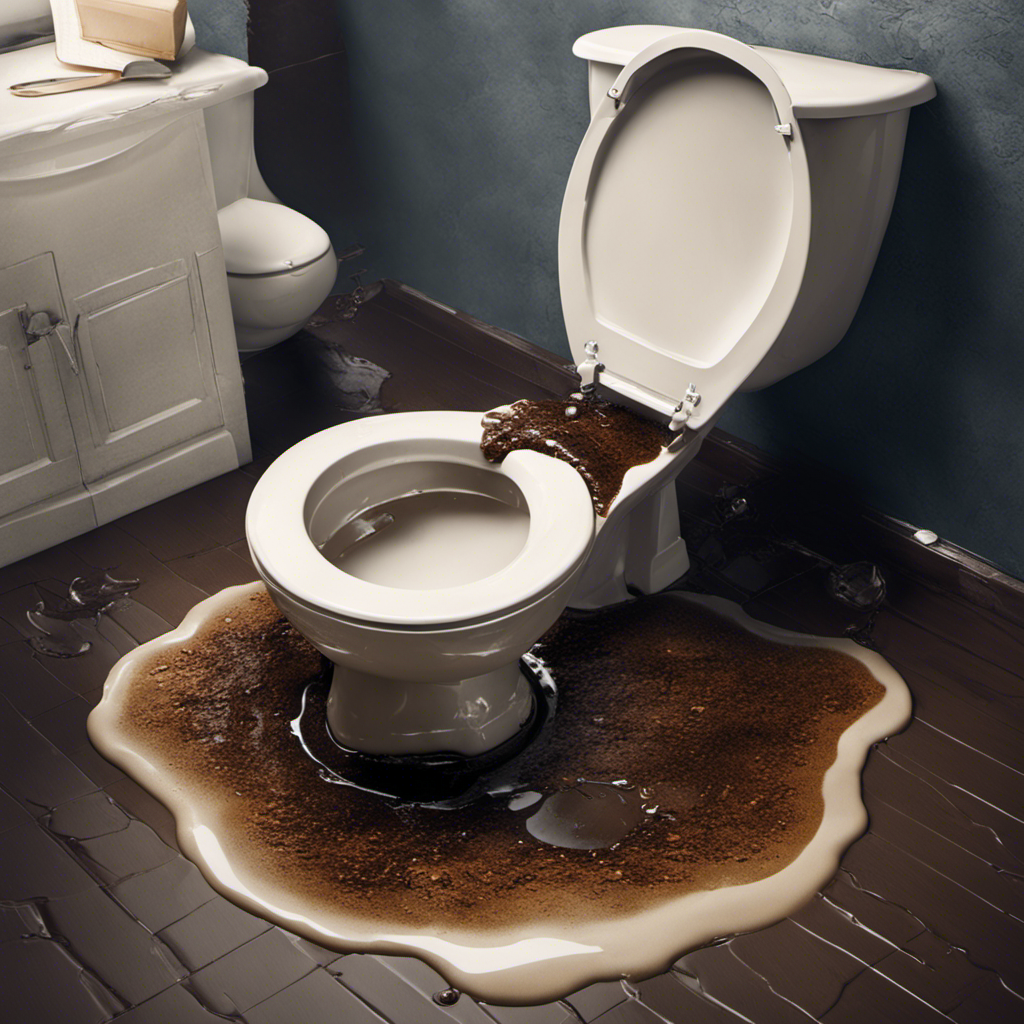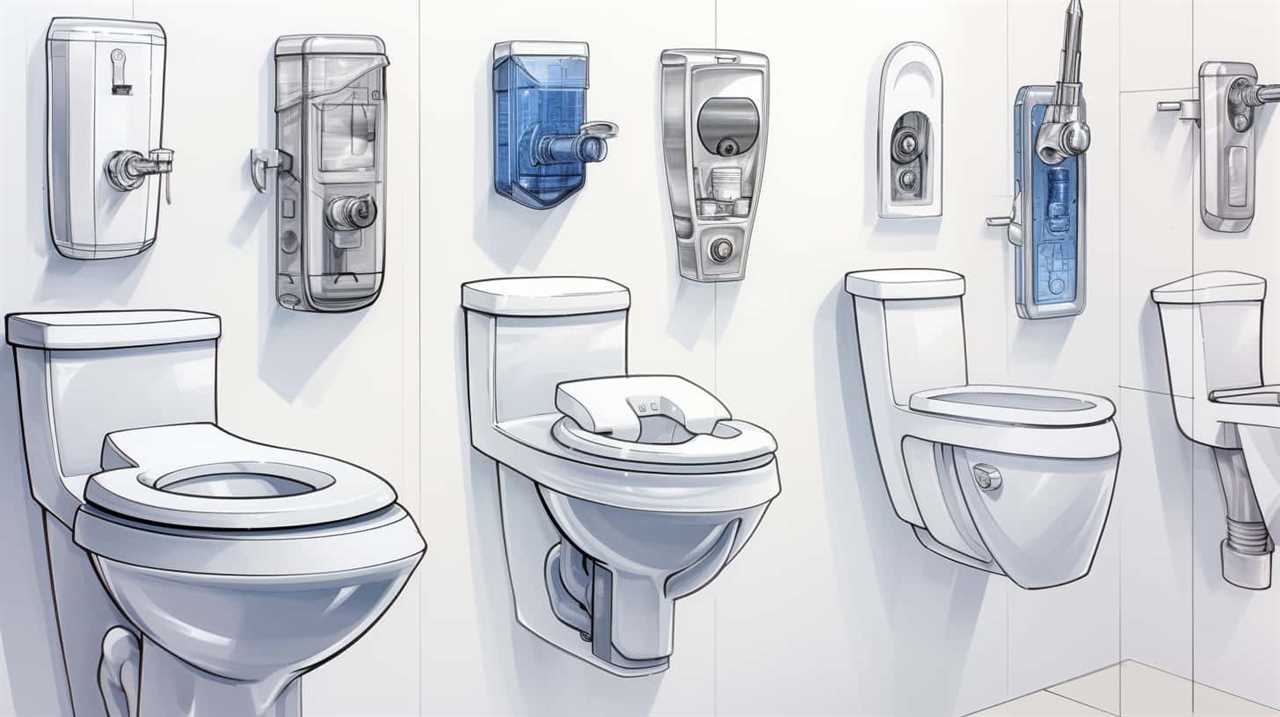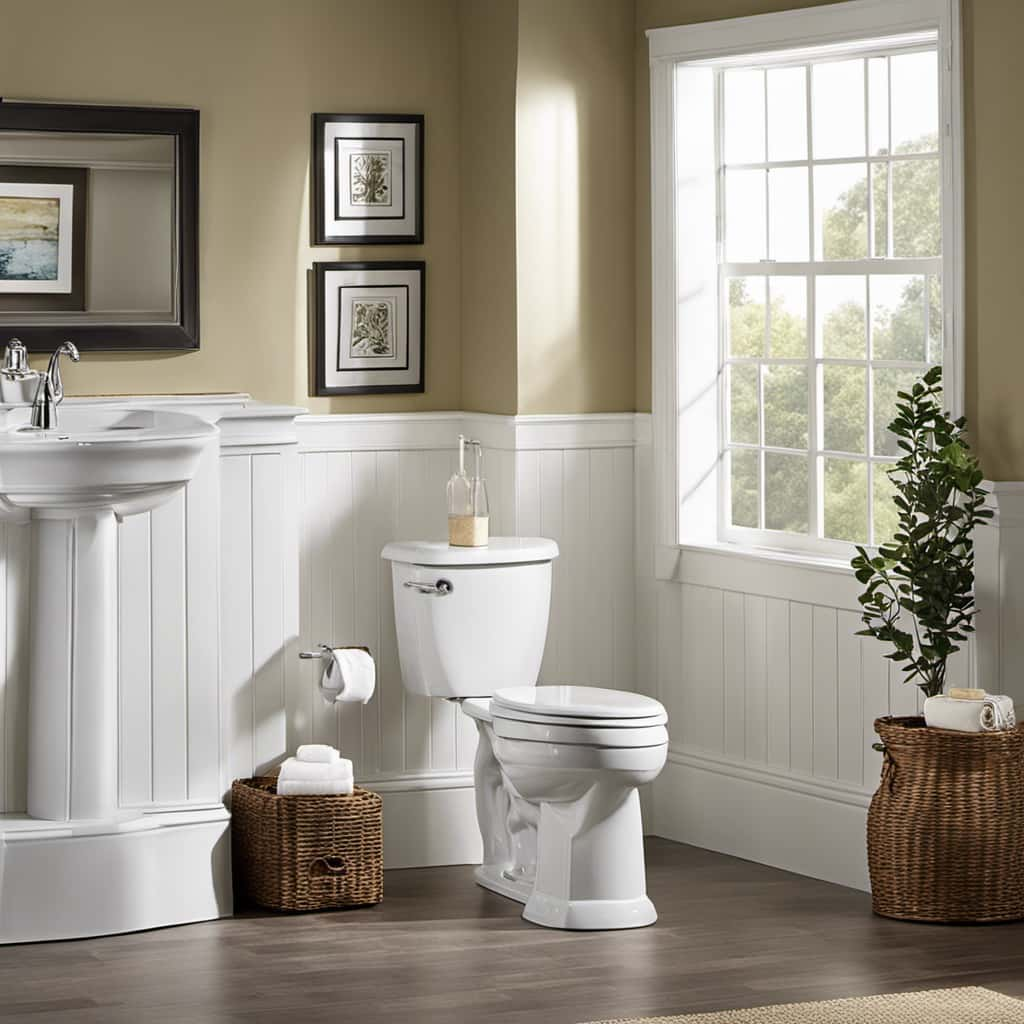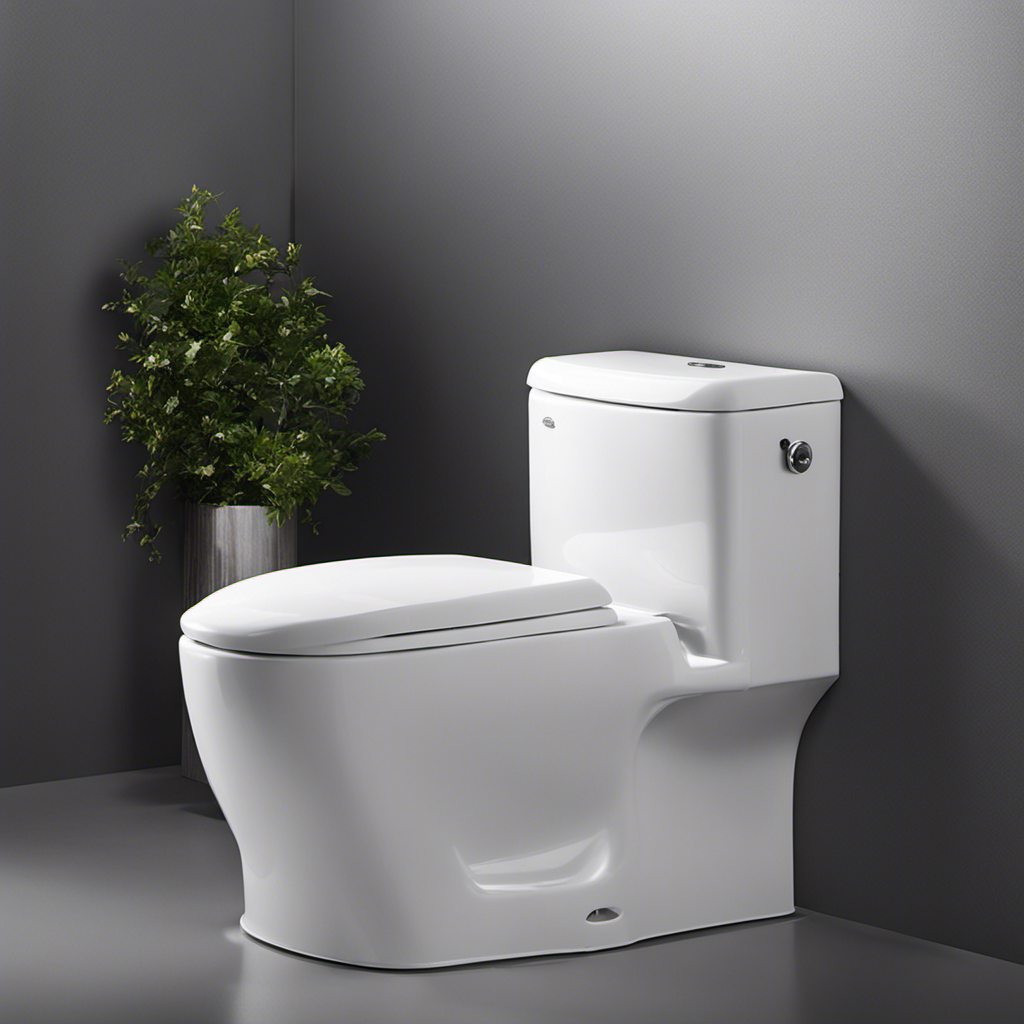I know what you’re thinking – why should I care about a leaking toilet? Trust me, I’ve been there too. But here’s the thing: a leaking toilet can cause serious damage to your home and your wallet if left untreated.
So, if you’re tired of dealing with mysterious puddles and rising water bills, it’s time to get to the bottom of the problem. In this article, I’ll walk you through the common causes of toilet leaks, how to identify them, and even provide some DIY solutions to fix the issue.
Key Takeaways
- Faulty flapper valve and worn or damaged flapper valve are common causes of toilet leaks.
- Signs and symptoms of a leaking toilet include water pooling around the base, constant presence of water on the floor, hissing or gurgling sound from the toilet tank, toilet bowl constantly refilling, and foul odor indicating a sewage leak.
- To identify the source of a toilet leak, visually inspect the area around the base for water pooling, listen for hissing or gurgling sounds from the toilet tank, check the wax ring for signs of damage, examine the toilet flange for any leaks, and inspect the fill valve and flush valve for malfunctions.
- DIY solutions for fixing a leaky toilet include turning off the water supply, inspecting and replacing the wax ring if necessary, checking and replacing any faulty tank components, tightening the bolts connecting the toilet to the floor, and regularly inspecting the toilet for signs of leakage.
Common Causes of Toilet Leaks
One of the most common causes of toilet leaks is a faulty flapper valve. The flapper valve is located at the bottom of the toilet tank and is responsible for controlling the flow of water into the bowl. When the flapper valve becomes worn or damaged, it can result in water continuously leaking from the tank into the bowl.
To prevent toilet leaks, regular maintenance is essential. This includes checking the flapper valve for any signs of wear and tear and replacing it if necessary. Additionally, using a toilet leak detection method such as adding food coloring to the tank and checking for colored water in the bowl can help identify leaks early on.
By being proactive in toilet leak prevention and detection, you can save water and avoid costly repairs.
Now let’s explore the signs and symptoms of a leaking toilet.
Signs and Symptoms of a Leaking Toilet
To identify signs and symptoms of a leaking toilet, you can easily spot water pooling around the base or notice a constant presence of water on the floor.
In addition to these visible indicators, there are a few other signs that can help you detect a toilet leak:
- A hissing or gurgling sound coming from the toilet tank.
- The toilet bowl is constantly refilling even when not in use.
- A foul odor emanating from the bathroom, indicating a sewage leak.
- Water stains or discoloration on the walls or ceiling near the toilet.
By being aware of these signs and symptoms, you can quickly identify if your toilet is leaking and take appropriate action to resolve the issue.
Now, let’s move on to the next section to learn how to identify the source of a toilet leak.
How to Identify the Source of a Toilet Leak
By checking for water pooling and listening for any hissing or gurgling sounds, you can easily identify the source of a toilet leak. One way to detect a toilet leak is to visually inspect the area around the base of the toilet for any signs of water pooling. If you notice water accumulation, it is likely that the wax ring or the toilet flange is faulty. Another method is to listen for hissing or gurgling sounds coming from the toilet tank. These sounds usually indicate a problem with the toilet’s fill valve or flush valve. To help you troubleshoot toilet leaks, here is a table summarizing the common sources of leaks and their corresponding signs and symptoms:
| Source of Leak | Signs and Symptoms |
|---|---|
| Wax Ring | Water pooling around the base |
| Toilet Flange | Water seeping from the floor |
| Fill Valve | Constant hissing or gurgling sounds |
| Flush Valve | Water continuously running into bowl |
Fixing a Leaky Toilet: DIY Solutions
If you want to fix a leaky toilet on your own, the first step is to gather the necessary tools and supplies.
Here are the steps to fix a leaky toilet:
-
Turn off the water supply: Locate the shut-off valve near the base of the toilet and turn it clockwise to stop the water flow.
-
Inspect the wax ring: Remove the toilet and check the wax ring for any signs of damage or wear. Replace it if necessary.
-
Check the tank components: Examine the flapper valve, flush valve, and fill valve for any leaks or malfunctions. Replace any faulty parts.
-
Tighten the bolts: Check the bolts connecting the toilet to the floor. If they’re loose, tighten them using a wrench.
By following these steps, you can fix a leaky toilet and prevent future leaks.
Regularly inspect your toilet for any signs of leakage to catch and address the issue early on.
When to Call a Professional for Toilet Leak Repair
If you’re unsure about your plumbing skills, it’s best to call a professional for toilet leak repair. While some minor leaks can be fixed with DIY solutions, there are certain situations where hiring a plumber is necessary. Here are some signs that indicate it’s time to call in the experts:
| Signs | Description | Cost of Professional Repair |
|---|---|---|
| Persistent leak | If your toilet continues to leak even after attempting DIY fixes, it’s a clear indication that a professional is needed. | Varies based on the extent of the damage and the plumber’s rates. |
| Water damage | If you notice water stains on the ceiling or walls below the toilet, it could be a sign of a major leak that requires professional attention. | Costs can range from a few hundred to a few thousand dollars, depending on the extent of the damage. |
| Complex repairs | If the repair requires disassembling the toilet or replacing major components, it’s best to leave it to a professional plumber. | Costs will depend on the complexity of the repair and the plumber’s rates. |
Hiring a plumber for toilet leak repair ensures that the problem is resolved correctly and prevents further damage to your bathroom. While the cost of professional repair may vary, it is a worthwhile investment to ensure the long-term functionality and efficiency of your toilet.
Frequently Asked Questions
How Much Does It Cost to Fix a Leaking Toilet?
Fixing a leaking toilet can vary in cost depending on the issue. It’s important to first identify the cause through toilet leak detection. DIY toilet repair can be a cost-effective option, but for more serious problems, it may be necessary to hire a professional.
Can a Leaking Toilet Cause Water Damage to the Floor?
Yes, a leaking toilet can cause significant water damage to the floor. It is crucial to address toilet repair promptly to prevent further damage and ensure the integrity of your bathroom.
What Should I Do if My Toilet Is Leaking From the Base?
If my toilet is leaking from the base, I should first shut off the water supply, then try a temporary fix like tightening the bolts. If the problem persists, it’s best to call a professional plumber.
Are There Any Temporary Solutions to Fix a Leaking Toilet Until I Can Get It Repaired?
There are temporary solutions and DIY fixes for a leaking toilet until it can be repaired. Some options include tightening the bolts, replacing the wax ring, or using a toilet repair kit.
Can a Leaking Toilet Waste a Lot of Water?
Yes, a leaking toilet can waste a lot of water. To prevent this, regular maintenance and timely repairs are essential. Ignoring a leak can significantly impact your water bills and the environment.
Conclusion
Well, well, well. Looks like we’ve reached the end of our little journey into the world of toilet leaks. Who knew such a mundane topic could be so intriguing? But hey, that’s the beauty of life, isn’t it?
We never know what surprises await us. So, if you find yourself facing a leaking toilet, fear not! Armed with the knowledge you’ve gained, you can tackle this issue like a pro.
Just remember, sometimes it’s the little things that bring the most joy. Happy toilet fixing!










